Recently scientists in Mexico have observed that Jacarandas began blooming in early January when they generally awaken in spring.

What Are Indicator Species?
|
|---|
| Must Read | |
| NCERT Notes For UPSC | UPSC Daily Current Affairs |
| UPSC Blogs | UPSC Daily Editorials |
| Daily Current Affairs Quiz | Daily Main Answer Writing |
| UPSC Mains Previous Year Papers | UPSC Test Series 2024 |
The European Parliament adopted the first European Union (EU) law to restore degraded ecosystems.
News Source: DTE
| Must Read | |
| NCERT Notes For UPSC | UPSC Daily Current Affairs |
| UPSC Blogs | UPSC Daily Editorials |
| Daily Current Affairs Quiz | Daily Main Answer Writing |
| UPSC Mains Previous Year Papers | UPSC Test Series 2024 |
The Green Credit Rules have raised concerns from experts due to their potential adverse impact on forest ecology.

| Benefits of Green Credits Program | Challenges Faced in Green Credits Program |
|
|
News Source: Downtoearth
| Must Read | |
| NCERT Notes For UPSC | UPSC Daily Current Affairs |
| UPSC Blogs | UPSC Daily Editorials |
| Daily Current Affairs Quiz | Daily Main Answer Writing |
| UPSC Mains Previous Year Papers | UPSC Test Series 2024 |
The Government has declared Muslim Conference Jammu & Kashmir (Sumji faction) and Muslim Conference Jammu & Kashmir (Bhat faction) for a period of five years under Section 3 of Unlawful Activities Prevention Act, 1967.
Recent Bans Under UAPA by MHA in 2023
|
|---|
Amendments In UAPA
|
|---|
Source: PIB
| Must Read | |
| NCERT Notes For UPSC | UPSC Daily Current Affairs |
| UPSC Blogs | UPSC Daily Editorials |
| Daily Current Affairs Quiz | Daily Main Answer Writing |
| UPSC Mains Previous Year Papers | UPSC Test Series 2024 |
The Sixth Assembly session of United Nations Environmental Programme (UNEA-6) is being held at their headquarters in Nairobi, Kenya,
Plastic pollution:
|
|---|
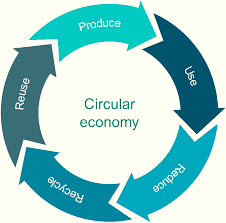
United Nations Environment Assembly (UNEA)
|
|---|
News Source: UNEA
| Must Read | |
| NCERT Notes For UPSC | UPSC Daily Current Affairs |
| UPSC Blogs | UPSC Daily Editorials |
| Daily Current Affairs Quiz | Daily Main Answer Writing |
| UPSC Mains Previous Year Papers | UPSC Test Series 2024 |
Pancheshwar Multipurpose Project (PMP) between India and Nepal, has been a topic of concern in official dialogue due to its stagnant progress over the years.
Mahakali River
|
|---|
The Mahakali Treaty
|
|---|
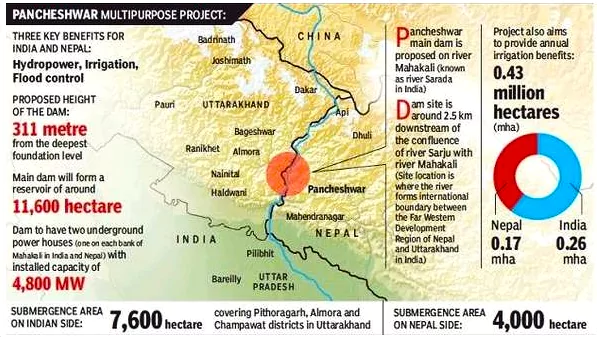
News Source: The Hindu
| Must Read | |
| NCERT Notes For UPSC | UPSC Daily Current Affairs |
| UPSC Blogs | UPSC Daily Editorials |
| Daily Current Affairs Quiz | Daily Main Answer Writing |
| UPSC Mains Previous Year Papers | UPSC Test Series 2024 |
Article 371A of the Constitution of India has been the major hurdle in the Nagaland government’s efforts to regulate small-scale illegal coal mining activities in the State.
Rat Hole Mining
|
|---|
News Source: The Hindu
| Must Read | |
| NCERT Notes For UPSC | UPSC Daily Current Affairs |
| UPSC Blogs | UPSC Daily Editorials |
| Daily Current Affairs Quiz | Daily Main Answer Writing |
| UPSC Mains Previous Year Papers | UPSC Test Series 2024 |
Recently, the Union Science and Technology Minister announced that India has conducted the first human clinical trial of gene therapy for haemophilia A at Christian Medical College – Vellore.
The trials involved deploying a novel technology of using a lentiviral vector to express a FVIII transgene in the patient’s own haematopoietic stem cell which will then express FVIII from specific differentiated blood cells.
About LentivirusesLentiviruses are a class of retroviruses that include human immunodeficiency virus (HIV), simian immunodeficiency virus (SIV), feline immunodeficiency virus (FIV) and equine infectious anemia virus (EIAV).
|


About the World Federation of Haemophilia (WFH):
Why is Haemophilia More Common Among Boys?
|
News Source: PIB
| Must Read | |
| NCERT Notes For UPSC | UPSC Daily Current Affairs |
| UPSC Blogs | UPSC Daily Editorials |
| Daily Current Affairs Quiz | Daily Main Answer Writing |
| UPSC Mains Previous Year Papers | UPSC Test Series 2024 |
Honorable Prime Minister laid the foundation stone for India’s second spaceport at Kulasekarapattinam, a coastal village in Tamil Nadu’s Thoothukudi district.

News Source: Indian Express
| Must Read | |
| NCERT Notes For UPSC | UPSC Daily Current Affairs |
| UPSC Blogs | UPSC Daily Editorials |
| Daily Current Affairs Quiz | Daily Main Answer Writing |
| UPSC Mains Previous Year Papers | UPSC Test Series 2024 |

Recently, the Prime Minister flagged off India’s first indigenously built hydrogen fuel cell inland waterway vessel in Thoothukudi, Tamil Nadu.
Harit Nauka- Inland Vessels Green Transition Guidelines:
|
|---|
PEM fuel Cell Technology :
|
|---|
News Source : The Hindu
| Must Read | |
| NCERT Notes For UPSC | UPSC Daily Current Affairs |
| UPSC Blogs | UPSC Daily Editorials |
| Daily Current Affairs Quiz | Daily Main Answer Writing |
| UPSC Mains Previous Year Papers | UPSC Test Series 2024 |
This article is based on the news “Clear and present danger in the Himalayas” which was published in the DownToEarth. Recently, the Supreme Court approved Shimla’s first development plan “Shimla Development Plan 2041”. This approval highlights the controversy of increasing vulnerability and challenges the Himalayan regions face.
| Relevancy for Prelims: Indian Himalayan Region, Urbanization In India, Smart Cities Mission (SCM), National Green Tribunal (NGT), and Supreme Court.
Relevancy for Mains: Shimla Development Plan 2041: Need, Objectives, Significance, and Concerns are related to Himalayan ecosystem. |
|---|
AMRUT: Atal Mission for Rejuvenation and Urban Transformation
|
|---|

Himalayas comprises the most dominating geographic feature of India. No other mountain range anywhere in the world has affected the life of people and shaped the destiny of a nation as the Himalayas have in respect of India.
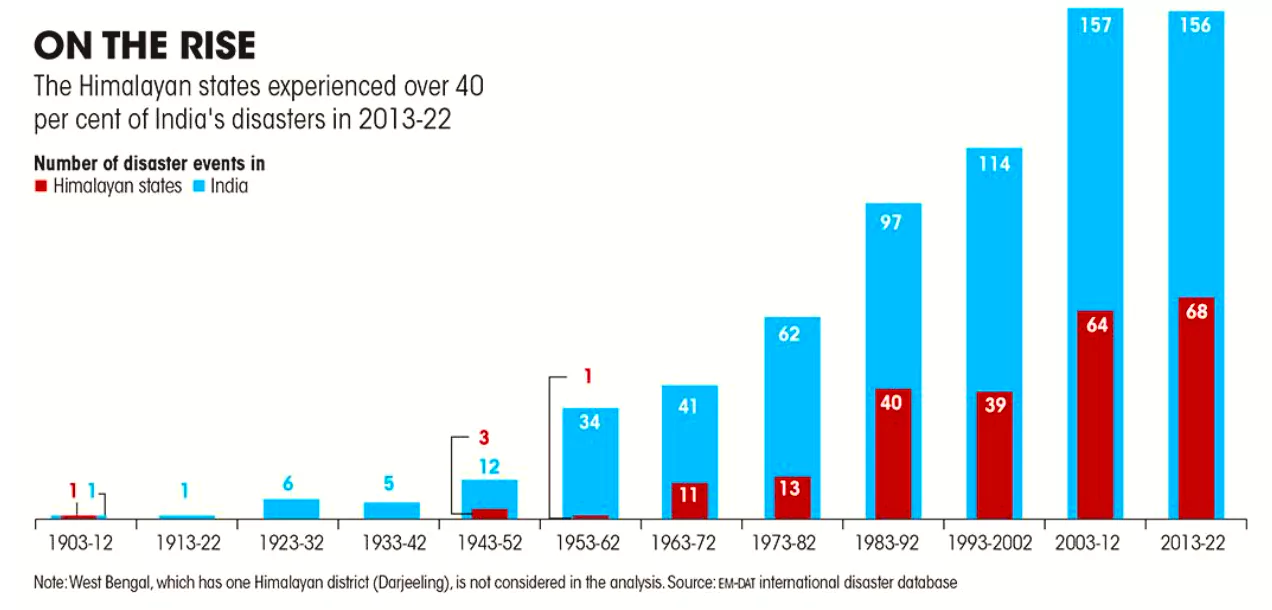
| EM-DAT is the only database that provides such disaster information since the 1900s, it records only major disasters, defined as those that have either recorded 10 or more deaths, affected 100 or more people, led to the declaration of a state of emergency, or called for international assistance. |
|---|
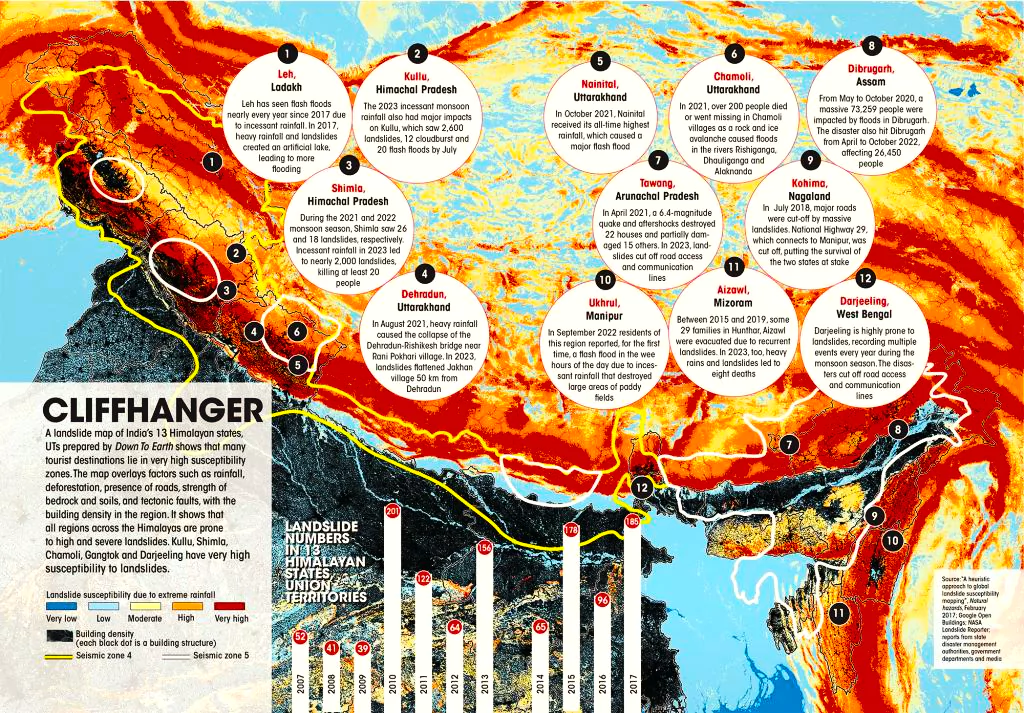
| NCS is the nodal agency of the Government of India for monitoring earthquake activity in the country. It maintains the National Seismological Network of 160 stations each having state of art equipment and spreading all across the country. |
|---|
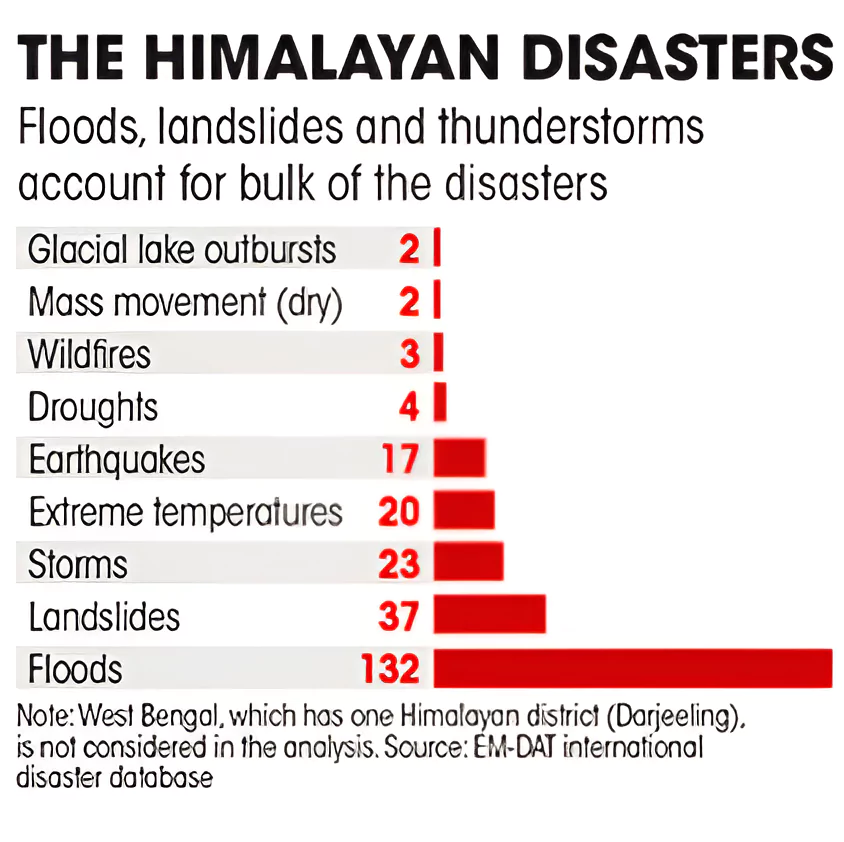
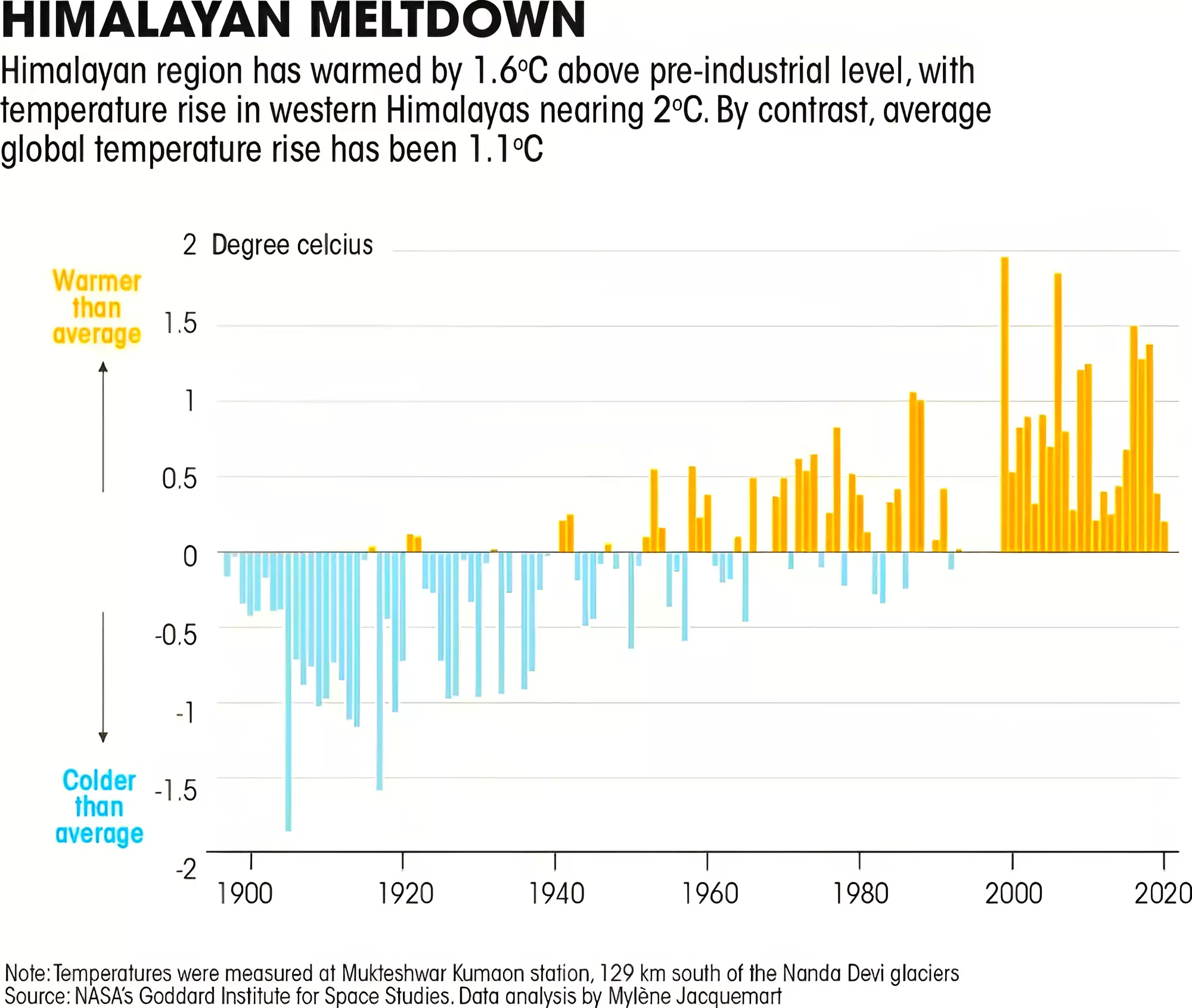
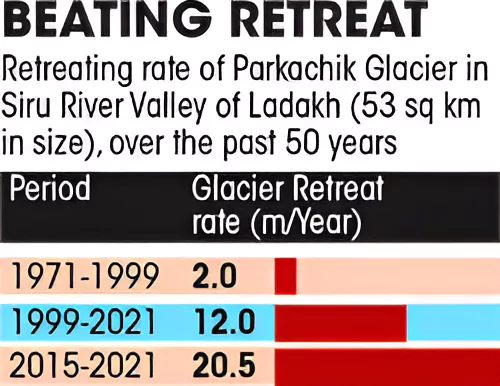 The most recent glacial lake burst occurred in Sikkim on October 4, 2023, and claimed more than 400 lives.
The most recent glacial lake burst occurred in Sikkim on October 4, 2023, and claimed more than 400 lives.
Government Initiatives For Protection to the Himalayan Region
|
|---|
Supreme Court Initiative: In August 2023, the Supreme Court mooted a re-evaluation of the load-carrying capacity of hill towns and cities, for which the Centre has proposed forming a 13-member technical committee. There is a five-point agenda to consider:
| Prelims PYQ (2017):
Consider the following statements: 1. In India, the Himalayas are spread over five states only. 2. Western Ghats are spread over five states only. 3. Pulicat Lake is spread over two States only. Which of the statements given above is/are correct? (a) 1 and 2 only (b) 3 only (c) 2 and 3 only (d) 1 and 3 only Ans: (b) |
|---|
| Must Read | |
| NCERT Notes For UPSC | UPSC Daily Current Affairs |
| UPSC Blogs | UPSC Daily Editorials |
| Daily Current Affairs Quiz | Daily Main Answer Writing |
| UPSC Mains Previous Year Papers | UPSC Test Series 2024 |
SC Verdict on Newsclick Shows Adherence to Due Pro...
Stay Invested: On Chabahar and India-Iran Relation...
Credit Rating Agencies, Impact on India’s De...
Catapulting Indian Biopharma Industry
Globalisation Under Threat, US Import Tariffs Have...
Global Report on Hypertension, Global Insights and...
<div class="new-fform">
</div>
